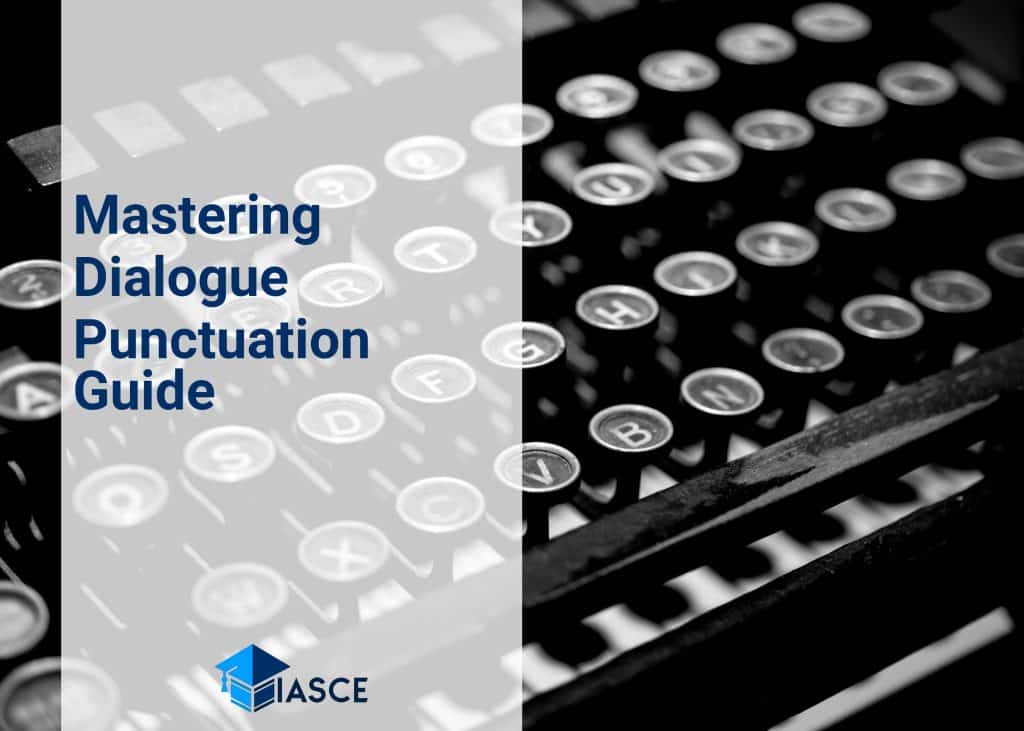Let’s face it, mastering dialogue punctuation can be a real headache. It’s one of those writing challenges that even the most seasoned authors grapple with. But don’t fret! I’m here to help you navigate through this seemingly complex terrain.
Think about your favorite novel or screenplay – what makes the characters come alive? Often, it boils down to their words – the dialogues. Yet, how often do we stumble over punctuation while crafting these conversations?
So let me guide you on this journey to mastering dialogue punctuation and say goodbye to all your dialogue-related woes. Because believe me, once you get a hang of it, there’s no turning back.
The Art of Crafting Dialogue
Crafting dialogue can be a daunting task, but it’s also an essential skill for any writer. It’s through dialogue that characters become real and relatable to readers. They express their thoughts, feelings, and personality through the words they say and how they say them.
To master the art of crafting dialogue, you need to understand the basic rules of punctuation. That’s where I come in. Let me guide you on this journey to flawless communication between your characters.
First off, every time a new person speaks, start a new paragraph. This simple rule helps readers keep track of who is speaking and keeps your text from becoming one big blob of words.
Next up is quotation marks! In American English, we use double quotation marks (“”) to encase spoken words. For example:
“I’m going home,” said John.
Did you notice that comma after ‘home’? We use commas to separate speech tags (like ‘said John’) from the actual dialogue within the same sentence.
Let’s talk about punctuation within quotes now. If your character asks a question or exclaims something within their speech, place the question mark or exclamation point inside the quotation marks:
“Is it raining?” asked Sarah. “Run!” yelled Tom.
What if there’s no speech tag? Then end the quoted speech with appropriate punctuation like periods, question marks or exclamations before closing with quotation marks:
“I love pizza.”
Finally, remember that less is more when it comes to using adverbs in dialogues – those pesky ‘-ly’ words like ‘angrily’, ‘happily’, etc., attached to speech tags. Overuse can distract rather than add value.
As you continue mastering dialogue punctuation and crafting engaging conversations for your writing projects, remember these pointers:
- Start each speaker’s dialogue in a new paragraph
- Use double quotes for direct speech
- Place commas before or after speech tags
- Put punctuation inside quotes
- Limit adverb usage
These guidelines will help create clear and compelling dialogues that breathe life into your story!
Punctuation: Making Your Conversations Shine
Let’s dive straight into the topic. Mastering dialogue punctuation is like adding a pinch of salt to your favorite dish—it enhances the flavor, making it shine! But how do we get there?
First things first: end marks. These are your periods, question marks, and exclamation points. They go inside the quotation marks. For example:
“I don’t want to go,” she said. “Do you have to leave?” he asked. “I’m so excited!” she exclaimed.
Here’s where the power of ellipsis comes in handy. When a sentence trails off or is left incomplete in dialogue, that’s when an ellipsis (…) gets its chance to play.
“But I thought you…” He couldn’t finish his sentence.
Now let’s talk about dialogue tags, those helpful little phrases that tell us who’s talking. When using these, remember that commas separate them from the quoted speech and always come before closing quotation marks. For instance:
“I can’t believe it,” John said.
What happens when you mix dialogue with action within one sentence? Simply use a period or other appropriate end mark instead of a comma for actions that are not part of the spoken sentence itself.
“Watch out!” She jumped back quickly.
But what if you’ve got two sentences by different speakers? Start each piece as its own paragraph for clarity and flow:
He looked at her suspiciously. “What are you doing?” She shrugged innocently. “Nothing.”
These principles serve as your foundation but remember—practice makes perfect! By mastering these rules and putting them into practice every day, I’m confident that your dialogues will truly start to shine!
Conclusion: Master Your Dialogue Punctuation
I’ve taken you through the ins and outs of dialogue punctuation. It’s my hope that you’re now feeling more confident about using it in your own writing. Remember, practice makes perfect! The more you write and read, the better you’ll get at spotting correct dialogue punctuation.
Let’s do a quick recap to make sure we’re all on the same page:
- Quotation marks encapsulate spoken words.
- Commas separate tags from dialogue.
- Periods end sentences unless there’s a tag following the dialogue.
- Question marks and exclamation points can replace commas inside quotation marks if the quoted speech is an exclamation or question.
These rules aren’t just suggestions – they’re crucial for clear communication in written English. When used correctly, they help readers understand who is speaking and what tone they’re using.
Don’t worry if it feels overwhelming at first. With time and practice, these rules will become second nature to you. As I always say, “Mastering any skill takes patience and perseverance.”
So go ahead! Dive into that short story or novel you’ve been putting off writing because of your apprehension about dialogue punctuation. You’ve got this!
Now remember, there are no shortcuts to mastery – only regular practice can guarantee improvement. So keep writing, keep reading, and before long, mastering dialogue punctuation will be just another feather in your cap as a writer!
Thank you for taking the time to read this guide on mastering dialogue punctuation. Keep practicing and never stop learning!

